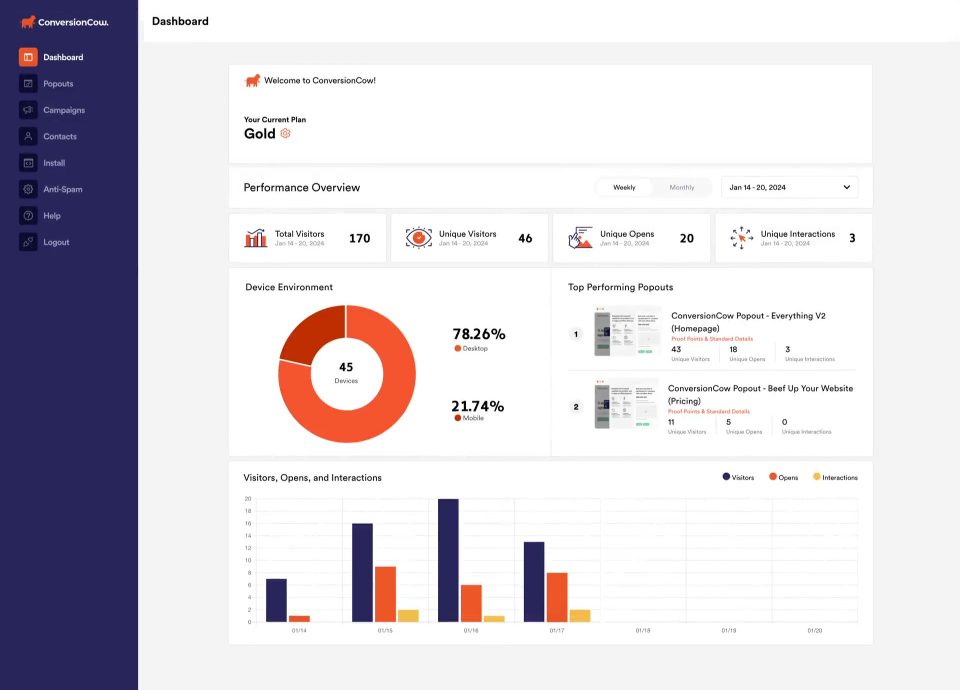
Marketing plans are designed to achieve specific goals, but how can businesses truly know if they’ve succeeded? The answer lies in metrics. At the conclusion of a marketing campaign, metrics provide the hard evidence necessary to measure performance, evaluate success, and uncover opportunities for improvement.
Understanding the Structure of a Marketing Plan
A marketing plan is typically composed of several stages, each designed to move the business closer to its marketing objectives. Here are some of the key steps:
- Setting Objectives: Clear goals are established to guide the marketing efforts
- Market Research: Data is gathered about the target audience, competitors, and industry trends
- Strategy Development: The company decides on its marketing approach, including tactics and messaging
- Execution: The strategies are put into action, whether it’s through advertising campaigns, social media outreach, or other methods
However, the final step is just as crucial — evaluation and analysis. This phase provides an opportunity to assess how well the marketing efforts aligned with the company’s goals and what could be improved moving forward.
Why Metrics are Important in the Final Step
Metrics are the foundation of the evaluation stage in a marketing plan. They provide concrete, data-driven insights into how a marketing campaign performed. Here’s why metrics are so critical in this last step:
1) Evaluating Success
Metrics allow firms to measure whether their marketing goals were achieved. Were the objectives—such as increasing brand awareness, generating leads, or boosting sales—accomplished? Without metrics, it would be impossible to objectively determine success.
2) Providing Tangible Data
While intuition and assumptions may guide earlier phases of the plan, metrics provide objective evidence to validate or challenge these assumptions. Data-driven results offer a clearer picture of campaign performance, helping firms understand what worked and what didn’t.
3) Accountability and Transparency
Metrics ensure that marketing efforts are transparent and accountable. They provide hard evidence for justifying the budget allocation, strategies, and decisions made throughout the marketing campaign. Decision-makers can use this data to explain why certain tactics were chosen and assess their effectiveness.
4) Identifying Areas for Improvement
No marketing strategy is perfect, and metrics offer a critical opportunity to identify areas where adjustments are needed. Whether it’s a campaign that failed to engage the audience or a tactic that didn’t generate the expected return, metrics reveal what needs to be refined for better results in the future.
Types of Metrics Used in the Last Step
The final stage of a marketing plan typically involves analyzing several types of metrics to get a complete picture of performance. Some key metrics include:
1) Key Performance Indicators (KPIs)
KPIs are the metrics that directly relate to a business’s objectives. Examples include:
- Conversion Rate: Percentage of visitors who complete a desired action, such as making a purchase or filling out a form
- Customer Acquisition Cost (CAC): Total cost of acquiring a new customer, including marketing and sales expenses
- Return on Investment (ROI): Measure of the profitability of a marketing campaign relative to its cost
2) Customer Behavior Analytics
Metrics that track how customers interact with your brand are also essential.
- Customer Engagement: Interactions like likes, shares, and comments on social media or blog posts
- Customer Retention: How many customers make repeat purchases or continue engaging with your brand over time
- Customer Satisfaction: Metrics gathered through surveys, Net Promoter Score (NPS), or reviews to assess customer sentiment
3) Sales and Revenue Data
At the end of the day, sales and revenue figures are often the most concrete evidence of marketing success. These metrics measure whether the marketing plan led to increased sales, higher revenue, or improved profitability.
4) Social Media and Digital Metrics
For digital and social media marketing, the following metrics are crucial:
- Website Traffic: Number of visitors to your site during a campaign
- Click-Through Rate (CTR): Percentage of people who clicked on a link or ad relative to how many saw it
- Paid Ad Performance: Effectiveness of paid advertisements, measured by metrics like cost-per-click (CPC) and conversion rates
Benefits of Using Metrics in the Final Step
Using metrics in the final step of a marketing plan offers several advantages:
1) Improved Decision-Making
Metrics provide actionable data that can guide future marketing strategies. By analyzing past campaign performance, firms can make informed decisions about what to keep, adjust, or discard for the next marketing plan.
2) Resource Optimization
By understanding which marketing tactics were most effective, companies can allocate resources—like time, money, and manpower—more efficiently in future campaigns.
3) Benchmarking and Goal-Setting
Metrics help firms set realistic goals for future campaigns. By comparing current campaign performance to past benchmarks or industry standards, firms can adjust their expectations and approach for optimal results.
4) Continuous Improvement
Metrics foster a culture of continuous improvement. By constantly measuring performance and identifying areas of growth, firms can refine their marketing plans over time to achieve better outcomes.
Conclusion
Metrics serve as the essential tool for assessing success, improving strategies, and making informed decisions for future campaigns. By carefully tracking and analyzing key performance indicators, firms can enhance their marketing efforts, optimize resources, and achieve long-term business growth.
If you haven’t yet integrated robust metrics into your marketing plan evaluation, now is the time to start. Focus on the KPIs that matter most to your business and use the data to guide your marketing decisions. And remember, continuous measurement and optimization are key to staying ahead of the competition.



